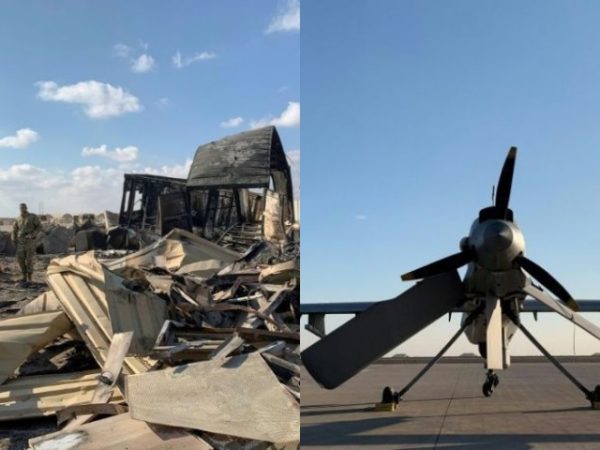
Ain al-Asad Air Base (Iraq) (AFP) – Moments after volleys of Iranian missiles began to batter Iraq’s Ain al-Asad airbase, US soldiers at the desert facility lost contact with their ultra-powerful — and expensive — eyes in the sky.
At the time the attack was launched at 1:35 am on January 8, the US army was flying seven unmanned aerial vehicles (UAVs) over Iraq to monitor bases where US-led coalition forces are deployed.
They included MQ-1C Gray Eagles, advanced surveillance drones that can fly for as long as 27 hours and carry a payload of up to four Hellfire missiles.
“We thought it may lead to a ground assault, so we kept the aircraft up,” said one of the pilots, 26-year-old Staff Sergeant Costin Herwig.
Herwig was flying a Gray Eagle when the first Iranian missile struck the base, retaliation for the January 3 killing of top Iranian general Qasem Soleimani in a US drone strike in Baghdad.
Most of the other 1,500 US soldiers had been tucked away in bunkers for two hours, after advance warning from superiors.
But 14 pilots had stayed in dark containers-turned-cockpits to remotely fly the “birds” and monitor essential feeds from their high-powered cameras.
A US soldier walks past a drone at the Ain al-Asad airbase in the western Iraqi province of Anbar (AFP Photo/Ayman Henna)
A US soldier walks past a drone at the Ain al-Asad airbase in the western Iraqi province of Anbar (AFP Photo/Ayman Henna)
The first missile blasted dust into their shelter but the pilots stayed put, Herwig told AFP during a press tour of the base organised by the coalition.
The next rounds came closer and closer, and the light-haired soldier recalled that he had “accepted fate”.

Enter your comment here…let them negotiate.